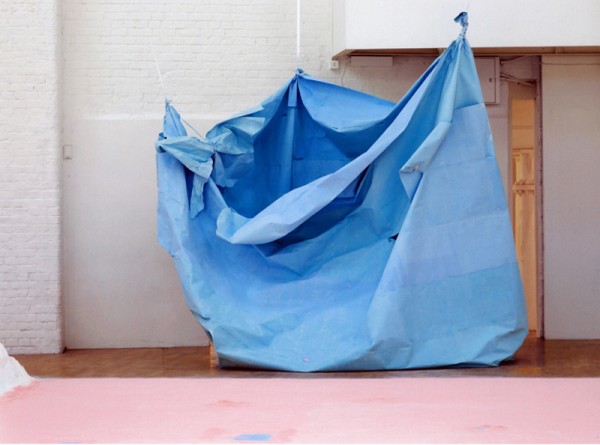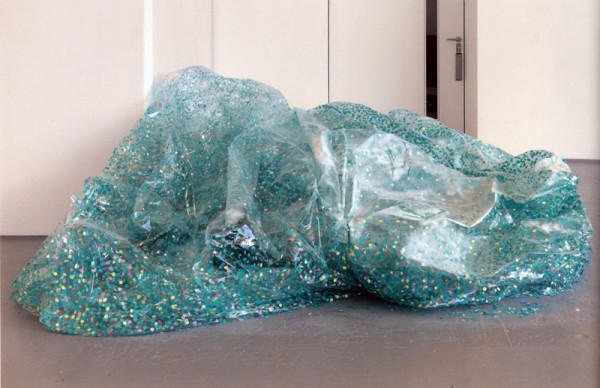Karla Black
Tuesday, 27 December 2011
Work from her oeuvre.
“WHEN I’M NEARLY FINISHED making a work, I ask myself, “If this was a painting, would it be a good painting?” If I decide that the answer is yes, then I’m done. I use impermanent and raw materials like paper, polythene, plaster powder, and cosmetic products in my sculptures not because they easily change and decay but because I want the energy, life, and movement that they give. I would much rather have the sculptures stay exactly as they are the moment I finish making them. But I also know that if my first priority were to preserve the work forever, or for as long as possible, then I’d use stone, metal, or wood. But those materials don’t have the qualities I want. It’s a double bind.
My work needs to occupy the kind of large rooms that Modern Art Oxford has to offer, and it needs to enter into the institutional realm in order to become what it really is. The work is both a protest and a compromise at the same time. While it tries to dismantle the demands of being permanent, transferable, and stable, as required by most art institutions, it also physically and sculpturally negotiates within those conditions and reaches compromises that allow it to exist in those places.
I prioritize material experience over language as a way of learning and understanding. The physical human experience that comes from the inside out precedes language and is most absorbent for us, most unself-conscious, when we are fully in it and therefore completely unaware of any image of ourselves, of how we think we might look to others. The moment we become aware of ourselves from the outside in, as an image that others can see, or as a subject that holds a particular meaning, symbolic or otherwise, then we split from that primary experience of the physical world and must think. Traditionally, painting offered an optical escape from this world, by providing a window onto another. Sculpture can offer some sort of escape, too, through an actual engulfment in the physical.
In art school critiques, my classmates sometimes said my work looked “feminine” and “domestic.” I could see what they meant, but that was never my intention and still isn’t. I like pink, and if someone wants to say that’s because I’m a woman, then perhaps it is. I’m interested in those kinds of cultural judgments that come from the outside. In the end, I decided to just do what I want to do, to use the materials and colors I want to use, because I want to enjoy making the work as much as I can. It’s hard enough to make something that’s any good, so you may as well start with some sort of self-indulgence.
I felt that judgments of femininity or domesticity were derogatory and that they meant, perhaps, that the work was not very good or not serious. (I still wonder why I thought and, to a certain extent, still think that. Is it because of some residual misogyny in myself?) There are a lot of men who use pink—Franz West, for instance. But who says that his work looks feminine or domestic?
Why is it only women’s art that is gendered? I was recently asked, “How do you think your work would differ if you were a man?” Would anyone ever ask a man, “What would your work look like if you were a woman?”” – as told to LAUREN O’NEILL-BUTLER for artforum



